Immigration to Malaysia? The Ultimate Checklist for moving to Malaysia
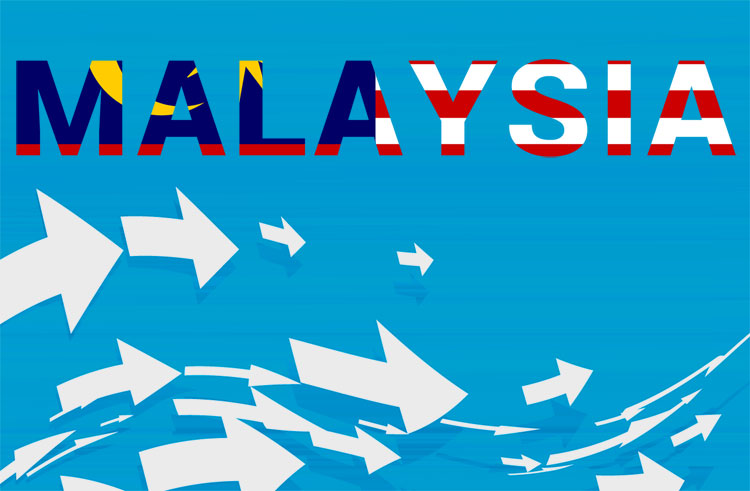
Malaysia has achieved rapid development by expanding its economy through various sectors. The burgeoning of its service sectors in recent years opens up many immigrants employment opportunities in industries like financial services, tourism and also medical tourism. That combines with various advantages that this country has to offer, such as relatively low living cost, openness to foreigners, rich culture and affordable healthcare, make immigration to Malaysia an attractive part. Here is a complete checklist of things you should notice or take care of prior to immigrating Malaysia to make sure your big move will be smooth sailing.
Types of Visa
There are a total of 3 types of visas for foreign nationals that intend to visit Malaysia:
1.Single Entry Visa:
This visa is eligible for foreign nationals who are visiting Malaysia predominantly for a social visit. It is valid for a single entry and for a period of 3 months from the issued date.
2.Multiple Entry Visa:
This visa is eligible for foreign nationals who are visiting Malaysia predominantly for business or government-to-government matters. It is valid for a period between 3 months to 12 months from the issued date. Each visit is for 30 days only and extended stay is not allowed.
Multiple Entry Visa Requirements:
-Applicants must show proof of sufficient funds for the duration of their stay in Malaysia. -Applicants must show proof of a valid return ticket. -Tour groups are not eligible to apply for this visa. -Citizens of India and the People’s Republic of China who wish to visit Malaysia for a social visit can apply for this visa. The visa costs RM100.00 for Indian citizen and RM30.00 for citizens of the People’s Republic of China.
3.Transit Visa:
This is issued to foreign nationals that require a visa to transit at Malaysia before continuing their travel to the next country. Foreign nationals that are on transit in Malaysia without leaving the airport and continuing their travel to the next destination with the same flight vessel do not require applying for this visa.
How to apply for a visa
All foreign nationals that intend to get a Malaysian visa need to go to any nearest Malaysia Representation Office Abroad. Only tourists from China and India can apply for a visa through the I-Visa system. There are 2 kinds of applications:
1.Application for a visa without reference (for social visit visa)
Document needed:
-Original passport -Two (2) photocopies of the applicant’s passport -Two (2) photocopies of the visa application form (Form IMM.47) -Two (2) passport size photographs of the applicant -Original and two (2) photocopies of the ticket (confirmed and returned ticket) -Bank statement/traveler's cheque -Invitation letter (if any) -Payment of visa fee
2.Application for a visa with reference (for the student visa, work visa, dependents, and professionals on a visit pass)
Document needed: -Original approval letter from the Immigration Department of Malaysia/other authority agencies -Original passport -Two (2) photocopies of the applicant’s passport -Two (2) photocopies of the visa application form (Form IMM.47) -Two (2) passport size photograph of the applicant -Original and two (2) photocopies of an air ticket -Payment of visa fee
Checklist for bringing pets into Malaysia
1. All pets must have an ISO 11784 pet microchip. 2. All pets must have an Import License issued by the Director General of Veterinary Services or the Director of the State Veterinary Department. Import License is valid for 30 days from the issued date. 3. All pets must have a Rabies certificate that shows pets are vaccinated more than 30 days from the day of departure. 4.Additional vaccines (recommended): -Dogs: Distemper, Hepatitis, Leptospirosis, DHLPP, and Bordetella. -Cats: Feline Viral Rhinotracheitis, Calicivirus, and Panleukopenia. 5. Vet Health Certificate (Form 7001) must be filled out by USDA accredited veterinarian and must be issued within 7 days from the date of export. 6. You must get the following 3 USDA endorsement documents: -Microchip Implantation Record -Rabies Certificate -Vet Health Certificate 7. All pets need to undergo 7 days of mandatory quarantine at Kuala Lumpur Animal Quarantine Station in Sepang, Selangor.
Notes:
-Puppies and kittens must be at least 3 months old prior entering Malaysia. -There is no restriction on the number of pets a person can bring into Malaysia.
Major Flights flying to Malaysia
There are many flights to go to Malaysia, depending on where you are coming from. You can compare flight fares using the various flight search engine, like Google Flights search service, Expedia.com, Kayak.com, Skyscanner and Priceline.com. Prices vary with season (holidays season to be precise), and so booking in advance is highly recommended. Generally, if you are coming to Malaysia from Asia countries or Australia, AirAsia, Malindo Air, and Malaysian Airlines will have the lowest fare rate. Do take in consideration that AirAsia flights do not come with checked baggage allowance, so extra charges are needed for that. Other than that, major international flight companies, like Qatar Airways, Emirates, Cathay Pacific Airway and others, have couple flights a day arriving at Kuala Lumpur International Airport (KLIA) as well. Getting to Kuala Lumpur, Malaysia will not be too much of a hassle as KL one of a major city and economic hub in Asia.
Major Airports at Kuala Lumpur, Malaysia
KLIA 1 Airport
KLIA 1 is the largest international airport in Malaysia and one of the major airports serving Southeast Asia and worldwide. It is located at Sepang, Selangor; distance from Kuala Lumpur city center is about 45 kilometer. Major international flights like Qatar Airways, Emirates, Cathay Pacific Airway and others fly through KLIA 1 daily. It is the 23rd busiest airport worldwide by total passenger traffic.
Normal Process
Pre-flight procedure at KLIA 1 is similar to any other major international airport. It is recommended to check in at the check-in counter least 3 hours before departure. You can opt for online check-in if that is available for your choice of carrier. Baggage check-in, security check, and immigration are all pretty standard. Again, it is important to arrive early to avoid long lines. As for arriving at KLIA 1, immigration and baggage claim process are pretty standard as well, nothing too peculiar than other major international airports.
How to reach KLIA1 Airport
KLIA Ekspres
Dubbed the fastest airport transfer in Kuala Lumpur, KLIA Ekspres is a non-stop airport train that connects KLIA 1 to KLIA 2 then to KL Sentral Station which is located in KL center. The whole journey only takes about 30 minutes and the trains depart every 15 minutes during peak hour.
KLIA Transit
This high-speed commuter circulates between KL Sentral- Bandar Tasik Selatan- Putrajaya & Cyberjaya- Salak Tinggi and KLIA.
*Note: If you choose to board the KLIA Ekspres or KLIA Transit from KL Sentral, you can avoid the airport rush and check in to your flight at the station if you are flying with Malaysia Airlines, Cathay Pacific Airways, Cathay Dragon and Malindo Airways.
Bus
There are plenty of bus services going from KLIA to KL city center or even other states. Head to the KLIA bus terminal on the ground floor of Block C Annexe and you will see bus ticket booths for various bus services. Refer to KLIA Bus Terminal Information for ticket details.
Airport limo
The traveler can choose to travel with luxurious limo services. You can purchase limo services coupon at 3 different location inside the airport: -International Arrival Hall (just after customs, before the public arrival area) -Domestic Arrival Hall (public area after Domestic Baggage Clearance) -Domestic Baggage Reclaim, Arrival level Please refer to Airport Limo information for more info.
Metered taxi
Head to Level 1 and 3 of the main terminal building and you will see taxi stands that you can purchase coupon. For budget-metered taxi, the fares are RM3.00 for the first 1 KM or the first 3 minutes and RM0.10 for each consequent 115 meters or consequent 45 seconds. There will be a 50% surcharge from 12a.m. till 6a.m.
Grab
You can download Grab car app on your phone, it is the Malaysia (and also in some other Southeast Asia countries) version of Uber. Uber had actually recently stopped their operation in Southeast Asia and merged in with Grab. They normally charge a flat rate of $65 from the airport to KL city center, and they sometimes offer a discount for airport rides as well.
KLIA2 Airport
Situated 2km away from KLIA 1 is the largest budget airlines airport in the world- KLIA 2! KLIA 2 is built to replace KLIA Low-Cost Carrier Terminal (LCCT), and the departure and arrival airport for budget carriers like Air Asia, Malindo Air, Tiger Airways, Lion Air and more. There are great selections of food and beverage outlets in KLIA 2. To accommodate low-cost travel, you find cheap eateries and convenient mart (e.g. Family Mart) in KLIA 2 as well, not to mention mid-range shopping outlets like H&M, Vincci, and Uniqlo.
Normal Process
Pre-flight procedure at KLIA 2 is similar to any other major international/domestic airports. It is recommended to check in at the check-in counter least 2 hours before international departure or at least 1 hour before for domestic flight. You can opt for online check-in if that is available for your choice of carrier. If you already did with online check-in, you can proceed to self-bag drop facilities to drop off your bags. Baggage check-in, security check, and immigration are all pretty standard. Again, it is important to arrive early to avoid long lines. As for arriving at KLIA 2, immigration and baggage claim process are pretty standard as well, nothing too peculiar than other major international airports.
How to reach KLIA2 Airport
KLIA Ekspres
Dubbed the fastest airport transfer in Kuala Lumpur, KLIA Ekspres is a non-stop airport train that connects KLIA 1 to KLIA 2 then to KL Sentral Station which is located in KL center. The whole journey only takes about 30 minutes and the trains depart every 15 minutes during peak hour.
KLIA Transit
This high-speed commuter circulates between KL Sentral- Bandar Tasik Selatan- Putrajaya & Cyberjaya- Salak Tinggi and KLIA.
*Note: If you choose to board the KLIA Ekspres or KLIA Transit from KL Sentral, you can avoid the airport rush and check in to your flight at the station if you are flying with Malaysia Airlines, Cathay Pacific Airways, Cathay Dragon and Malindo Airways.
Bus and taxi and rented car
Head to the Transportation Hub that is located at Level 1 in KLIA 2, just right next to the Capsule Hotel, and then you will find taxi coupon counter, bus service counter, and rented car counter.
Grab
You can also download Grab car app on your phone and order a Grab car to send you into the city. Same as KLIA 1, Grab charges flat rate of RM65 from the airport to KL city center, and they sometimes offer a discount for airport ride as well.
Hotels in Kuala Lumpur
You can go searching for hotels in Kuala Lumpur on various hotel searching website like Hotels.com, Expedia.com, Booking.com and more. If the purpose of your visit is just for sightseeing, it is recommended to book your hotel in the city center. For example, there are plenty of hotels to choose from at the long stretch of Bintang Walk and they are all within walking distance to major shopping malls and a short drive away from top attractions like Petronas Twin Towers. Although hotels will cost more at a prime area like this it will save you traveling time and cost in return.
Renting an apartment or a room from Airbnb. Airbnb is a better choice for a large group of friends or family visit or a more lengthy stay in Malaysia. For a backpacker, it is also a good option to stay with an Airbnb as some listing is as low as RM10 a night. Pick a place that is close to an LRT or MRT station will be your utmost concern.
Malaysian Food Introduction
Malaysian takes pride in their food, as they are very proud of the rich cultural heritage and multicultural influence of the country, which in return makes Malaysian food one of the most unique cuisines in the world. The three main races, namely Malay, Chinese and Indian contribute to various delicacies of a different spectrum. On top of that, the fusion of Malay and Chinese cuisine give birth to the one-of-a-kind Peranakan food.
Malay food
Malay food has a very strong, aromatic and spicy taste. The cooking method usually involves many Southeast Asia spices like turmeric and many kinds of Southeast Asia herbs like pandan leaves. Traditional instruments like a pestle and mortar are used to blend all the spices and to make sauces. Malay food is often eaten with hands. Nasi Lemak is one of the most popular Malay food. It consists of coconut milk cooked rice wrapped in pandan leaves to give the rice a distinct coconut milk aroma with a side of fried peanut, anchovies and spicy sambal sauce (Malay hot sauce). Another staple Malay food will be satay. Satay is skewers of marinated beef, mutton or chicken cubes thread together on a bamboo stick and put on the hot charcoal grill to cook till perfection. It normally comes with a sweet and tangy peanut sauce, cucumber slices and some ketupat (Malay rice ball) on the side.
Chinese food
Most Chinese food that you can find in Malaysia is not too different from those you can find in China, Taiwan or Hong Kong. However, there is still some local Chinese food that was invented here in Malaysia. For instance, Bak Kut Teh was originated from Port Klang, where the coolies that worked there combined any herbs they can find at the port and throw them into a pot, boiled with water and pork rib to make soup. Bak Kut Teh is a kind of aromatic herbal soup, which the pork meat is stewed until it is so tender that it melts in your mouth instantly. You normally have Bak Kut Teh with strips of fried dough called you char kuey, the dough will soak up all the flavor in the soup and explode in your mouth!
Indian food
The Indian immigrants in Malaysia were originated from Southern India, unlike most of the other countries in the world where the Indian immigrants are mostly from Northern India. Banana leaves rice is one of the Southern Indian cuisines you can find in Malaysia. You get to pick your choice of vegetables, meat, curry, and rice. Your meal will then get placed on a large piece of banana leaves as a plate for you to indulge in. Other than that, you can find various flavors of roti (Indian crepe) in any Indian restaurants in Malaysia. Roti telur (roti with eggs), roti kosong (plain roti), roti pisang (roti with banana), roti cheese (roti with cheese) and the list goes on and on.
Peranakan food
The Peranakan cuisine (also known as Baba-Nyonya cuisine), is the fusion of Chinese ingredients with Malay spices and cooking methods. Peranakan cuisine emphasizes both sweet and spicy flavors, and it often time comes with the colorful display. For example, edible blue pea flower is commonly used to dye rice or desert blue. If you ever make it to Malaysia, you should definitely try some Peranakan food as it is so rare that you can only find it at this part of the world. Some Peranakan food that you should definitely try: Nyonya chap chye, Assam pedas, nasi ulam, Ayam Buah keluak, babi pongteh, and laksa.
1. Immigration to Malaysia: Setting up home
Moving to a new country is a big transition and there are many aspects of a new living space that you would need to take into consideration. It is always safest to see the house or apartment with your own eyes to eliminate potential living issues prior official move in. If you're planning to move to Malaysia, I strongly suggest immigrants post a request in YaMummy to find a home for rent. When people contact you, take the chance to understand the rent range and also neighborhood you are interested in moving to. This serves as a short-term trial for you to explore the environment and neighborhood before signing a yearlong lease. Many living aspects like the safety of the neighborhood, proximate distance to train stations, sizes of living space, traffic and noises from construction sites are difficult to justify from the information you get online, hence seeing with your own eyes is very important.
If you're planning immigration to Malaysia and go with a property agent, it is very important to communicate with them frankly and articulately about your budget, priority, and timeline in order for them to provide you the most suitable housing options. You should also make sure that the property agent you are talking to is from a licensed real estate company to avoid con job. It is also prudent to put a deposit down with bank cheque instead of cash.
If you are looking for prime residential areas
The information for this topic will focus solely on the area within the capital, as Kuala Lumpur is the main immigrants' relocation destination in Malaysia. Popular residential areas for immigrants right now as followed:
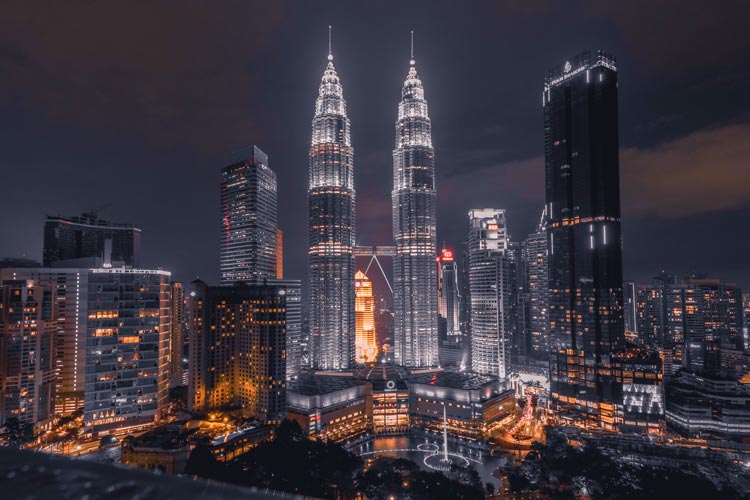
-Damansara Area
One of the most popular housing area right now for young adults and families and immigrants alike. Due to this unique mix of residential profiles, the area is populated with trendy bars, eateries, gym recreation centers and hangout spots that makes it very attractive for people that are looking to mingle and make friends.
-Desa Sri Hartamas
The location is secluded from the chaos of the city but situated strategically at the junction of four major expressways, allowing fast and convenient access to the city center. Housing options including low-rise condominium and townhouses that surrounded by dense greenery hence create a homey feel to immigrants.
-Mont Kiara
You can find many luxury and service apartments here in Mont Kiara. It is largely comprised of residential units with an abundance of international schools nearby. Many immigrants family choose to live here due to its safe and family-friendly environment.
-Bangsar
Bangsar has been the ultimate immigrants' community hub for years now. With major shopping centers, western brand grocery stores, and restaurants around, it provides a space for the expat community to stay engage in social life and stay close with each other.
2. Immigration to Malaysia: Getting around
Rush hours at a major city like Kuala Lumpur are typically 8-10am and 4-8pm on weekdays. During this time being, try to avoid going on the road if you can or expect to be stuck in traffic for hours.
Here is the list of commute options if you do not own a car:
- Grab and taxi
Download Grab Car apps on your phone are the smartest way to get around in most part of Malaysia. Grab Car is Malaysia (and also in some other Southeast Asia countries) version of Uber. Uber had actually recently stopped their operation in Southeast Asia and merged in with Grab. Grab often offers free ride credits and every point that you accumulated from taking rides can be used to redeem ride credits as well. Due to limited parking space and high parking fees, many people that own cars in Malaysia actually opt to take Grab to go to places.
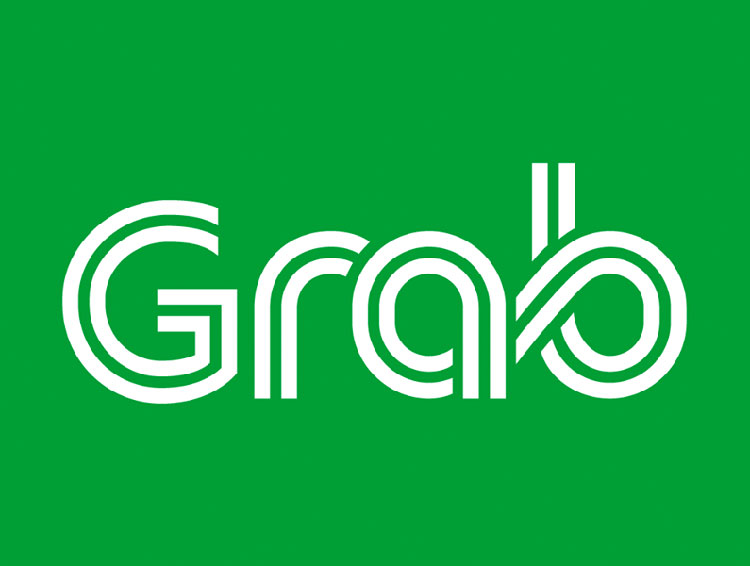
Only turn to Taxi as last resort, like when the Grab app is down (that sometimes happens, oops). Try to bargain a little with the taxi driver and insist to use taximeter to calculate taxi fare. Do not let them coax or intimidate you into agreeing on a fixed fare that he suggested. They can sometimes be a little aggressive, just say no firmly and walk away from them if the price isn’t fair.
- LRT, MRT, and KTM
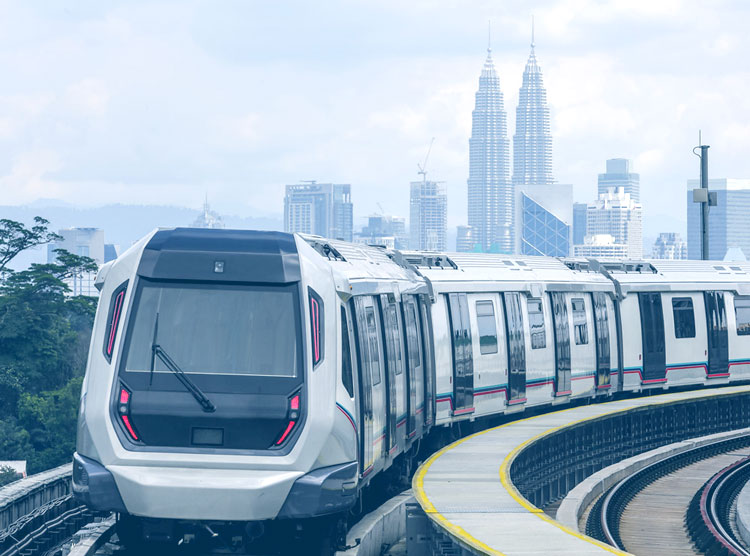
You can also take public transport to get around if it is available around the area you are going. Public transport is accessible to almost all area of Kuala Lumpur but sometimes you will need to walk a distance to the destination from the station or that the commuting time is too long, and paying a few ringgits more by getting a Grab ride can save you from those hassles. The LRT and MRT are great and air-conditioned, and also comes with a very fair price. I would advise avoiding the KTM, because it is old, always jam-packed with people, and break down pretty often.
Find Metro Train routes and other details here
- Public bus
As for the buses, they are usually overcrowded and make frequent stops in heavy traffic. They are extremely cheap though.
Prepare to drive in Malaysia
First of all, please aware that Malaysia follows the British driving system, with steering wheels on the right, and drivers are driving on the left-hand side of the road.
Immigration to Malaysia and drive with an International Driving Permit (IDP) that only valid for a year. Please visit Official Portal of Road Transport Department Malaysia to get information on how to apply for IDP. The Road Transport Department of Malaysia has recently ruled out license conversion from foreign countries, hence the two ways an expat can drive in Malaysia is to either obtain an IDP or get a Malaysian driving license based on existing process.
To get a Malaysian driving license from scratch, you will need to start from getting the L license. You will get this license once you register with a driving school, go through a five-hours theory course with an instructor to learn about basic driving knowledge in Malaysia. You can choose to receive an English handbook but the lesson is usually taught in Malay with very limited English course. Then you will need to attend a computerized driving theory test and the cut off mark is 84% (total amount of questions is 50). After getting license L (Learning), you will need to go through a minimum of 16 hours of practical driving training under the supervision of a licensed driving instructor. Now you can choose to apply for D license (manual car) or DA license (automatic transmission vehicle). Once you and your instructor are confident about your progress, you can then go ahead to register for the actual driving test. The driving test includes a slope test, 3-point-turn test, parking test, and open road test. You will then earn the P (Probationary) license that lasts for 2 years after passing all of the tests. After that, you will get upgraded to a Competent Driving License (CDL).
3. Immigration to Malaysia: To get mobile services

After immigration to Malaysia, the first thing you should do is to get connected to the world.
It is very easy to get mobile services in Malaysia, you just have to pop into one of the many shopping malls and they normally have all major mobile service providers there for you to choose from.
You will be asked to provide a copy of your passport. You can choose to have a prepaid or postpaid plan for your mobile phone.
- Prepaid Plan
A prepaid plan is definitely easier to manage and less hassle if you are just looking for a convenient mobile plan for yourself only. You pay a fixed amount every month and get fixed internet quota, call, and SMS credits, and top up when it reaches a full one month cycle. Prices are pretty uniform for all mobile providers, ranges from RM30-40 per month. The most important part is to find out how good is the coverage and how strong is the signal certain provider is at your residential and work area by asking your neighbor, real estate agent or colleagues. You can compare prepaid plans here at
Best Mobile Prepaid Plans In Malaysia 2019
-Postpaid Plan
A mobile postpaid plan saves you the hassle of having to top up credits at every end of plan cycle. Since you probably have to sign at least a yearlong contract by having a postpaid plan, you should really get your priority straight, changing phone plan after already starting it can be troublesome. You can compare postpaid plans here at
Best Mobile Post Paid Plans In Malaysia 2019
4. Immigration to Malaysia: Prepare for medical care
Healthcare in Malaysia is divided into 2 sectors: public and private. Both sectors are comparable with highly skilled medical staffs, high standard facilities, and great services. What makes public healthcare different from the private are cost and convenience. Since public healthcare is governed by the Ministry of Health and funded by the state, employers, and residents, the cost of medical care is subsidized. Doctor visit, medical, and medicine pick up is priced at RM1 and up. Hence, public hospitals tend to be overcrowded. However, the public healthcare system is only for Malaysian. With private healthcare, the cost is definitely much higher than public hospitals but with almost no waitlist. After immigration to Malaysia, you've to present your passport before getting service in Hospitals or clinics.
To get health insurance
Malaysia does not provide national health insurance but the government has implemented Foreign Workers Hospitalization & Surgical Insurance (SKHPPA) and makes it compulsory for working immigrants to have medical insurance while residing in Malaysia. This insurance scheme ensures immigrants to have access to a fixed amount of medical care each year in a government hospital and the immigrants are responsible to cover the cost of medical insurance coverage.
It is advisable for immigrants to get additional private health insurance for better coverage for themselves and for their family members. It is best for immigrants to take their time to visit multiple insurance companies when they are already in the country in order to compare what various insurance plans have to offer and pick the one that is most suitable.
5. Immigration to Malaysia: Prepare for schools
For those who're worried of children's education after immigration to Malaysia, you are in luck because Malaysia’s education system is of outstanding standard and you have a wide range of school options to choose from according to your budget.
Immigrants have 3 options to choose from when it comes to school:
- Public schools
Public school is the cheapest school option on the list. There are plenty of public schools in every suburbs and it is basically free with minimum administration fees. Public schools usually start at 7:30 am and end around noontime. Some public schools also have afternoon session that starts from noontime till 6 pm. You can find all the basic learning facilities in all public schools like computer labs and sports field. The student-to-teacher ratio is usually pretty high. It is normal to have 40-50 students in a class in a public school.
However, the language barrier will be the biggest obstacle for foreign students as the main language of teaching and also communication is Malay. They might undergo culture shock as well by being placed into such immersive local learning environment and have to give a tremendous amount of effort and time to get adjusted to the pace of learning.
- Private schools
Private school is a good way to eliminate the problems of the language barrier and culture shock. Most private schools use English as their main teaching language and it is also the language of communication among students and staffs in school. The curriculum that private schools employ is the same as public schools and it is compulsory for private school students to take all government exams that students in public schools have to undergo. The tuition fees of private schools are usually pretty costly. You can visit the Private School List to explore options for various private schools.
-International schools
Other than Kuala Lumpur, you can find international schools in several other states in Malaysia as well, including Selangor, Malacca, Johor, Penang, Sabah, Sarawak and more. International schools are the best option for immigrants that want their children to receive an education based on the curriculum of their home country or another country rather than Malaysia. International school tuition fees tend to vary from school to school and it should be a factor to consider for immigrants that have a budget for this. You can visit the International School List to explore options for various international schools.
6. Immigration to Malaysia: Prepare for the weather
Malaysia consists of two main parts, Peninsular Malaysia to the West and East Malaysia (Malaysia Borneo) that comprises of Sabah, Sarawak, and Labuan.
Despite geographical distinction, East and West Malaysia have no significant difference in term of weather. Malaysia is hot and humid all year long, with temperature fluctuates between 25 and 35 degree Celsius (between 77 and 95 degree Fahrenheit).
If you are coming from a country with cooler climate or could not accustom to warm and humid climate for at least the first few months of relocation, it is wise to look for accommodation that comes with air conditioner.
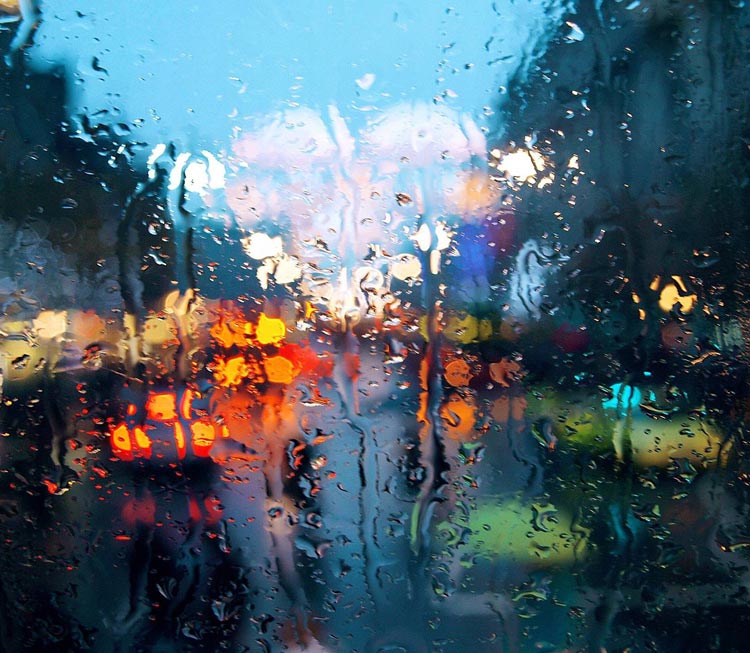
The raining season/ monsoon season starts at a different time of the year depending on which part of the country you are going to. For the East coast, it is generally between October till March. And for the west coast, the heavy rainfall is bestowed from above between May and October. There is not much to do to prepare for monsoon season. As it normally rains for a few hours block at a time and rarely for the entire day, commute when the rain stops and you should be able to carry on with daily life unaffected.
7. Immigration to Malaysia: Prepare for Natural Disaster
When you think about immigration to Malaysia, it's obvious that your mind will think about the natural disasters in South East Asia. But Malaysia is very blessed to be shielded from all natural disasters but it is still vulnerable to natural hazards like flood during monsoon season. The water level normally abates after a few days. Raining season is not such a serious threat and daily life can still continue. The haze coming from the wildfire at neighboring country sometimes affects the country. It might cause mild discomfort but rarely reaches a critical level and a simple facemask would suffice a few hazy days.
If you enjoy this article please share with your friends
You can find new roommates, rooms or condominiums in YaMummy.
Please contact us for any query info@yamummy.com